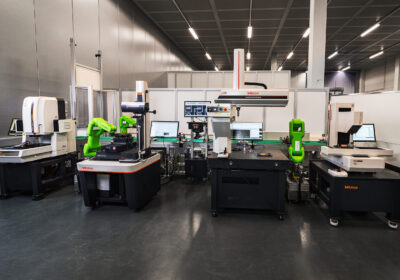Having the right technology in place for your business is essential to stay competitive, but many businesses find themselves constrained by legacy systems. These systems often provide core services but are no longer appropriate for today’s requirements for one or more reasons such as not integrating with more modern technologies, being the slowest link in a chain which degrades performance and user experience, or posing a growing risk to information security.
In fact, 74% of manufacturers are held back by disconnected data, and with other companies also suffering from shortfalls with their technology, undergoing a business digital transformation is essential to improve efficiency, data security, and business growth.
Kevin Tate, Mainframe Portfolio Director at Jumar says: “Your business will give you signs when it is in the right position to grow successfully, but recognising when your technology is holding you back is just as vital. Letting go of your legacy systems can be difficult when they’ve served your business well so far, but knowing when they are starting to cause inefficiencies is important for a seamless growth process based on technology suited to your business needs.”
Signs your business is ready for a modernisation approach
Shift in business goals
As your business and the market you’re in grow, your goals and priorities will shift. It is vital that your technology is scalable and flexible enough to continue meeting demand and acting in a way that benefits your business.
As part of your shifting business goals, you might change KPIs and need new data analysis systems to better understand your progress – adjusting your technology architecture might be the answer to doing this.
Kevin says: “Systems and processes which worked for your business in the past won’t be applicable to the scale, demands, or speed at which you’re operating now. As your business grows, your technology needs to keep up – whether it is catering to a new generation of employees to simply undergoing bug patches. When your technology no longer aids your business goals, it is time to consider modernisation.”
Process inefficiencies
Legacy systems can often lead to inefficiencies in your business as their programs are no longer the most up-to-date or efficient method of doing things. Whether you’re using a new system which isn’t compatible with older models or you’re finding your data is lagging, keeping up with new systems, equipment, and trends is essential for keeping you ahead of the competition.
Kevin says: “Legacy systems might not be the most appropriate for your business anymore as new technologies emerge which offer a more efficient method of producing the same, or better, results. If you neglect this technology, you might be giving your competitors an advantage which could be costly for your business.”
Increased security risks
You’ll also want to consider modernising your technology if you’re finding yourself open to increased security risks. A cyberattack takes place every 39 seconds. This puts businesses at risk of losing or compromising not only their own intellectual property and assets, but also their customer’s data. This could put you at risk of damaging your reputation and even facing regulation fines.
Kevin says: “One of the best reasons to invest in digital transformation is for the security of your business. Systems which no longer receive updates can become a target to cyberattacks and act as a vulnerability within your technology infrastructure. Ensuring that you’re protecting your assets and data includes modernising your technology and systems to prevent malware, data corruption, and other forms of malicious attack.”
Things to consider when changing your technology stack
Convincing stakeholders
When it comes to planning a digital transformation, you’ll need everyone in your business on board with the transition – especially your stakeholders. They will want to know their investment is being put to good use and a digital transformation can often take time to provide outcomes.
Planning ahead of time and easing your stakeholders into a large transition such as this should include highlighting what is being changed and the reasoning behind it. You’ll also want to highlight how the new technology and software will benefit your business goals in the future – which prepares your stakeholders that results might not be apparent immediately.
Interim technologies
You will also want to consider if you need interim or immediate technologies brought in during your transition. These are systems which can act as emergency measures during a transition if your infrastructure isn’t ready for a particular system or process to be implemented yet. Careful planning and working with a trusted digital transformation partner can help you transition seamlessly across different technologies.
Planned downtime
As with any technological update, modernising your systems will require a period of downtime. Being able to plan this in advance can ensure the least disruption to you, your customers, and your stakeholders. For downtimes that need to disrupt some of your work or your customers, ensure that you’ve given plenty of warning.
Adopting an evergreen approach
When planning your modernisation, you should consider adopting an evergreen software approach. This means choosing systems and technologies which will scale with your business, offering you the flexibility you need to continue your work. This will help you avoid needing to undergo another modernisation in the future – helping to avoid technical debt.
Modernisation can be a necessity, especially if your technology is limiting your business’s potential or even causing security risks. You’ll want to consider how you are using your current legacy systems, in what ways they’re not appropriate for your business, and how your business goals have changed since you last implemented these technologies.
Sources:








